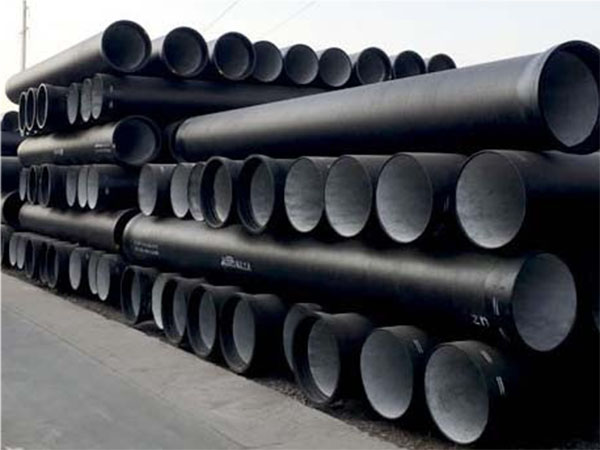Piping materials- cast iron
Cast iron is a traditional material widely used in pipeline engineering. They are favored for their excellent strength, corrosion resistance and cost effectiveness. In this paper, the characteristics and uses of cast iron as pipe material are discussed in detail from the characteristics, classification, application, advantages and disadvantages of cast iron.

What is cast iron and how is cast iron produced?
Cast iron is a general term for iron-carbon alloys with carbon content of more than 2% and silicon content of 1-3%. Its use stems from its relatively low melting point and is suitable for casting.
Cast iron is made from pig iron, which is the product of the melting of iron ore in blast furnaces. Cast iron can be made directly from melted pig iron, or it can be made by melting pig iron, which usually adds a certain proportion of iron, steel, lime, carbon, and goes through many steps to remove unwanted components.
Characteristics of cast iron
1. High intensity
Cast iron has high compressive strength and can maintain good performance under high load conditions.
2. Corrosion resistance
The oxide layer formed on the surface of cast iron can effectively resist corrosion in most environments, and is especially suitable for buried or long-term use of pipelines.
3. Cost effectiveness
Compared with many other metal materials, cast iron is cheaper to manufacture and has a long service life.
4. Good sound insulation performance
Cast iron material is dense, can effectively reduce the noise of fluid through the pipe, is the ideal choice for building drainage system.
Classification of cast iron
1. Grey cast iron
Referred to as gray cast iron, the carbon content of gray cast iron is about 2.5-4.0%, the silicon content is 1-3%, the graphite in the structure is distributed in sheets, easy to process and has good seismic function. However, due to the serious cutting effect of flake graphite on the matrix, the plasticity of gray cast iron is poor, and its tensile strength and toughness are lower than that of steel, but its compressive strength is close to low carbon steel and medium carbon steel.
2. White cast iron
White cast iron is an intermediate in the manufacture of malleable cast iron, carbon exists in the form of carbide, high hardness but brittle, low toughness, not suitable for use in structural components.
3. Malleable cast iron
The malleable cast iron is obtained by graphitization annealing of white cast iron with certain composition. The graphite is flocculated and its plasticity is higher than that of gray cast iron. According to the different metallographic structure, it can be divided into black core malleable iron, pearlite malleable iron and white core malleable iron.
4. Ductile iron
Nodular cast iron is a high-performance cast iron obtained after spheroidization and inoculation of white cast iron, because the precipitated graphite is spherical, it is called graphite cast iron. Ductile iron has excellent toughness and strength, mechanical properties close to
carbon steel.
5. Vermicular graphite cast iron
The graphite in vermicular graphite cast iron is wormlike, so it is called vermicular graphite cast iron. Vermicular graphite cast iron has the advantages of good heat resistance and fatigue performance, higher strength than gray cast iron, and better casting performance than ductile cast iron.
6. Alloy cast iron
The corrosion resistance and heat resistance of alloy cast iron are improved by adding elements such as nickel, chromium, manganese, vanadium and titanium.
Application of cast iron pipe
1. Water supply system
Cast iron pipe is widely used in urban water supply network and industrial water supply pipeline because of its high strength, corrosion resistance and leakage resistance.
2. Drainage and wastewater treatment
Gray cast iron pipe is the main force in municipal and building drainage systems, can cope with complex wastewater media, and has good durability.
3. Natural gas transmission
Ductile iron pipe is often used in medium and high pressure natural gas transmission system because of its excellent compressive strength and sealing performance.
4. Industrial pipes
Alloy cast iron pipes are an important choice in piping systems that transport corrosive or high-temperature fluids.
Advantages and disadvantages of cast iron pipe
1. Advantages
Strong durability: Cast iron pipes have a long service life, usually up to more than 50 years.
Easy maintenance: The cast iron pipe can be restored by local repair after damage.
Environmental protection: Cast iron can be recycled, in line with the requirements of sustainable development.
2. Weaknesses
Large weight: Cast iron pipe transportation and installation inconvenience, need to use special equipment.
High brittleness: rupture may occur when subjected to strong impact.
Limited corrosion resistance: internal and external protection is required in highly corrosive environments.
Future development trend
With the advancement of technology and the emergence of new materials, cast iron pipes are developing in the direction of lightweight, corrosion resistance and long life. For example, cast iron pipes coated with anti-corrosion layers inside and outside can significantly improve their corrosion resistance, making them continue to occupy an important position in modern industrial and municipal engineering.
Read more : Piping materials-stainless steel or Piping materials- alloy steel
